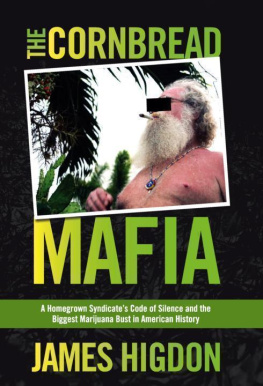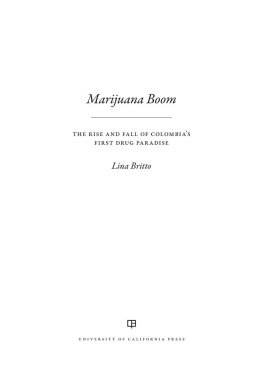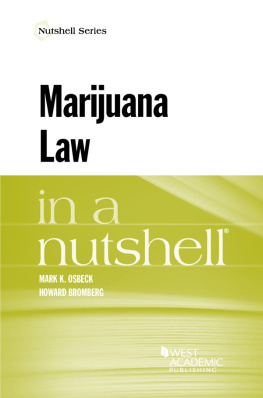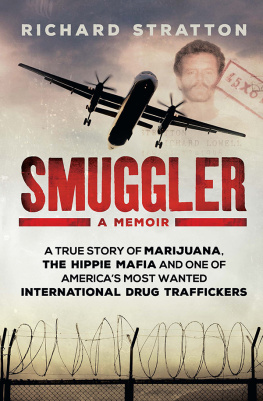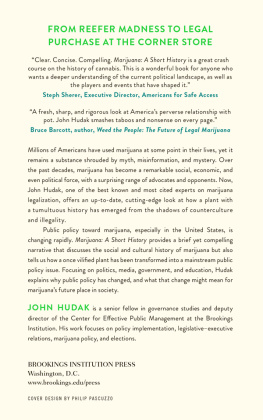

"The state of Kentucky should declare itself the storytelling capital of the nation. The place is brimming with remarkable, colorful stories and some of the most natural storytellers you'll ever meet. James Higdon and his new book, The Cornbread Mafia, are the latest proof of that. This is a tale that is so rich and utterly startling that it's honestly hard to believe in parts. But Higdon's research is smart, and his writing is smooth. He's especially good on the history of this American saga, which may have fallen through the cracks of time without his hard work."
-Ann Hagedorn, author of Wild Ride: The Rise and Fall of Calumet Farms, Inc., America's Premier Horseracing Dynasty
"Who knew Kentuckians take marijuana as seriously as they do bourbon? James Higdon digs deep to document American pot pioneers and their extralegal escapades. Thoroughly researched, The Cornbread Mafia is chock-full of fascinating homegrown history, not to mention a plethora of entertaining anecdotes of illegality. Higdon provides an intimate look at an exceedingly wild bunch of outlaws. Most impressively, he gains exclusive access to Johnny Boone, an eccentric, pot-farming legend and longtime fugitive from the law."
-Jason Ryan, author of Jackpot: High Times, High Seas, and the Sting That Launched the War on Drugs
"Whether you are interested in learning more about a unique chapter of Kentucky's and our nation's history or just want to be entertained, you should read this book. More importantly, though, The Cornbread Mafia is a case study of the effects upon a single tightknit community of the drug laws put in place by successive administrations. Whether you support these laws or oppose them, this book provides a window into how those laws affect real families and their communities. Higdon's book is especially timely, coming on the heels of the Ken Burns documentary, Prohibition, and Ron Paul's presidential campaign."
-Trev Gravson, Director of the Institute of Politics at Harvard University

A Homegrown Syndicate's Code of Silence and the Biggest Marijuana Bust in American History
JAMES HIGDON



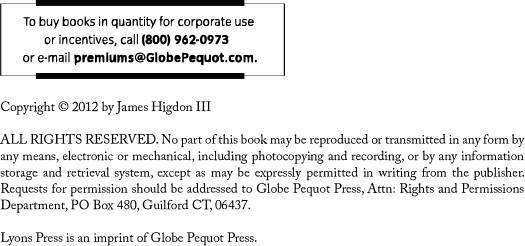
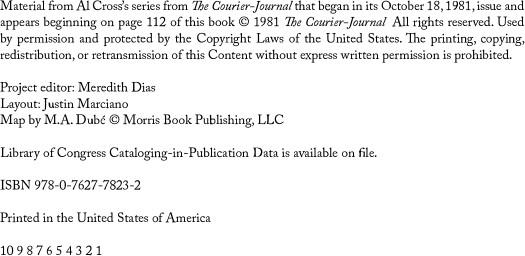

... vii
PART I
CHAPTER... 3
CHAPTER 2: . 32
CHAPTER 3:.......... 63
CHAPTER 4:........... 89
........... 130
CHAPTER 6:........... 150
PART II
CHAPTER 7:...... 166
CHAPTER 8:..... 200
CHAPTER 9:........... 239
CHAPTER..... 265
CHAPTER..... 274
CHAPTER 12:.... 304
............. 345
................ 366
....... 376


WHEN JOHNNY BOONE VIOLATED HIS PAROLE IN THE EARLY SUMMER OF 1987 by leaving Kentucky via an Ohio River bridge en route to one of his secret farms in Minnesota, he set into motion a series of events that would define him and his associates as the largest homegrown marijuana syndicate in American history. The band of large-scale pot cultivators headquartered in a three-county Catholic enclave in central Kentucky would be tagged by the federal government and the media with a name a few of the men had already self-applied: the "Cornbread Mafia"-yet just as many members claim to never have heard the term until it was mentioned publicly by federal prosecutors and amplified by the media.
"I wonder where they got that from?" Johnny Boone remembered thinking the first time he saw the term Cornbread Mafia in the newspaper. By then he was already in prison.
As local law enforcement busted Boone and a dozen others in Minnesota, federal agents tracked another Kentuckian, Bobby Joe Shewmaker, who had been running from the law since being found guilty in 1985 of a pot-smuggling scheme dating back to 1979. Law enforcement agents assumed that Shewmaker was the sole kingpin of all the Kentucky marijuana growers, commanded from his home turf of Marion County. But the Minnesota bust suddenly forced the task force chasing Shewmaker to reevaluate its concept of the Marion County "cartel." It was much bigger and more complex than the agents had ever imagined. The busted Minnesota harvest alone weighed ninety tons, the police said, a number they calculated by weighing one dump truck load, then multiplying that by sixty-two-the number of trips it took to clear the fields-and then multiplying that number by two because so much marijuana remained in the field that estimating its weight was "inconceivable."
When police nabbed Bobby Joe Shewmaker in a Canadian Great Lakes resort town in May 1989, the federal task force had identified as members of the Cornbread Mafia seventy rural Kentuckians-sixty-nine men and one woman, and almost all of them Catholic-from three years' worth of busts on twenty-eight farms in ten states, where police seized 182 tons of marijuana, starting in August 1985 when Michigan State Police seized 31,747 plants (but made no arrests) to early October 1988, when the Kansas Bureau of Investigation seized 68,300 plants over four days and arrested fourteen people from Marion County but not Shewmaker, who wouldn't be apprehended for another seven months.
On June 16, 1989, a month after Shewmaker's arrest in Canada, the US Attorney's Office in Louisville called a press conference to declare these seventy people, whom the prosecutors referred to as the "Cornbread Mafia," to be "the largest domestic marijuana organization in American history." Thirteen days later, June 29, Illinois State Police arrested four men from Marion County growing fifty-eight thousand plants in White County. Because the Drug Enforcement Administration (DEA) figured one pound per plant, that's another twenty-nine tons.
The prosecutors' designation of the "Cornbread Mafia" as the "largest" depends upon its designation as a "domestic" organization, as in only non-smuggled pot. Cornbread operations actually reached across several international borders: Shewmaker's 1979 smuggling scheme involved a routine shrimp-boat trip to the Caribbean coast of Colombia, and Boone would be busted in 1982 while meeting a plane that was returning from Belize. But because police nailed these two men and scores of their associates with 182 tons on farms in the South and Midwest, prosecutors didn't even bother with the Cornbread's international dalliances; the size of its domestic operation alone earned the Cornbread its superlative classification. Still, there was more to this group that made it unique in the eyes of the law. Federal task force documents obtained by Freedom of Information Act (FOIA) requests note that, unlike any other illegal drug operation of its size, the syndicate included no foreign nationals-that not only were all the participants American, but also they were from one state, from a three-county area, and the vast majority from Marion County.
Next page
